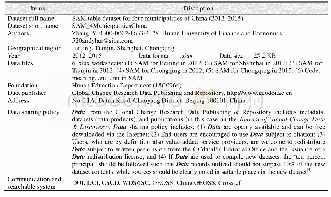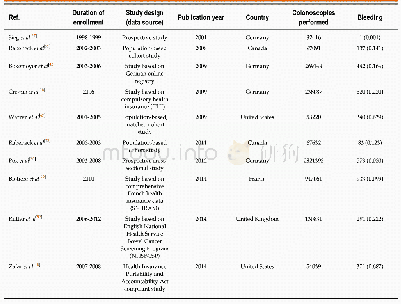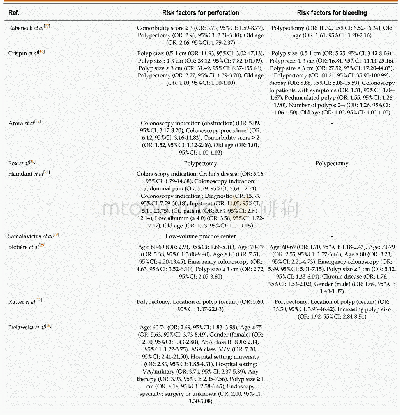《Table 1 Summary of calculated incidence rates for perforations related to colonoscopy from recent s
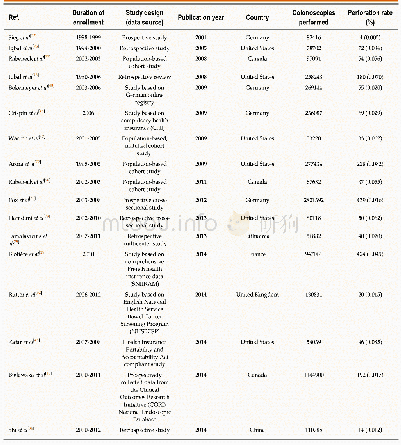 提示:宽带有限、当前游客访问压缩模式
提示:宽带有限、当前游客访问压缩模式
本系列图表出处文件名:随高清版一同展现
《Adverse events related to colonoscopy: Global trends and future challenges》
Bleeding after a polypectomy is known to occur more frequently and can be divided into immediate bleeding and delayed bleeding according to the time of onset[35,36].The post-polypectomy bleeding rate(0.98%)is significantly higher compared with when a polypectomy is not performed(0.06%)(P<0.001) [5].The mechanism of post-polypectomy bleeding varies depending on polyp morphology.In the case of pedunculated polyps,a large feeding vessel usually passes through the stalk.Insufficient electrocoagulation during stalk cutting with a snare may cause pulsatile bleeding[40].In the case of sessile polyps,the polypectomy section is usually deep and wide,which may result in insufficient electrocoagulation of the interior,resulting in bleeding from the internal margin of the section.In addition,exposed vessels are often located in the submucosal layer,which may increase the risk of delayed bleeding[41,42].The number,size,morphology,and histology of polyps,as well as cardiovascular disease,are risk factors for post-polypectomy bleeding[8].Shalman et al[43]reported that use of aspirin or nonsteroidal anti-inflammatory drugs(NSAIDs)does not increase the risk of post-polypectomy bleeding.A recent meta-analysis showed that aspirin and NSAIDs are risk factors for delayed,but not immediate,postpolypectomy bleeding[44].Table 2 summarizes the risk factors associated with postpolypectomy bleeding.
| 图表编号 | XD0049332600 严禁用于非法目的 |
|---|---|
| 绘制时间 | 2019.01.14 |
| 作者 | Su Young Kim、Hyun-Soo Kim、Hong Jun Park |
| 绘制单位 | Department of Internal Medicine, Yonsei University Wonju College of Medicine、Department of Internal Medicine, Yonsei University Wonju College of Medicine、Department of Internal Medicine, Yonsei University Wonju College of Medicine |
| 更多格式 | 高清、无水印(增值服务) |
查看“Table 1 Summary of calculated incidence rates for perforations related to colonoscopy from recent studies with sample si”的人还看了
-
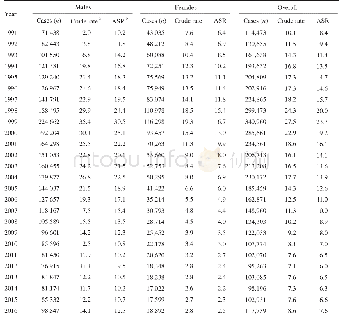
- Table 1 Number of cases, crude and age-standardized reported incidence rates (per 100, 000) of gonorrhoea in males and f


